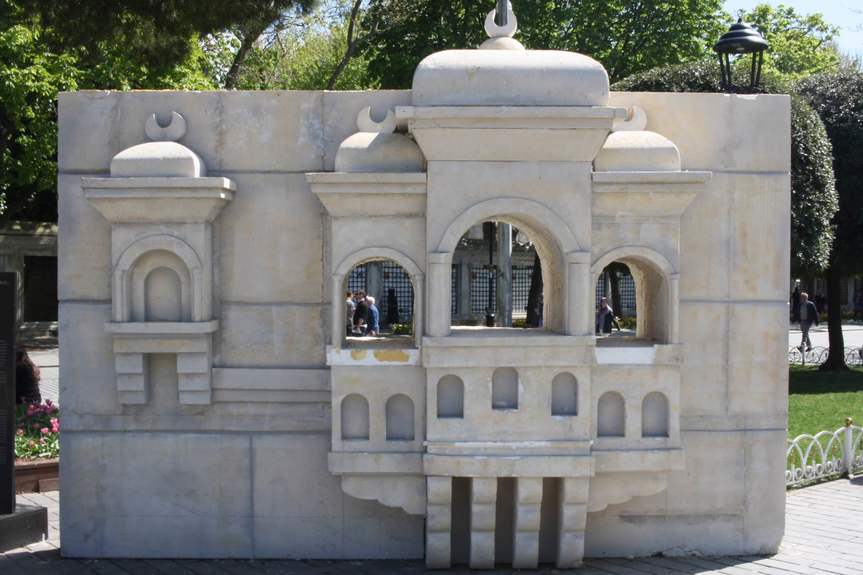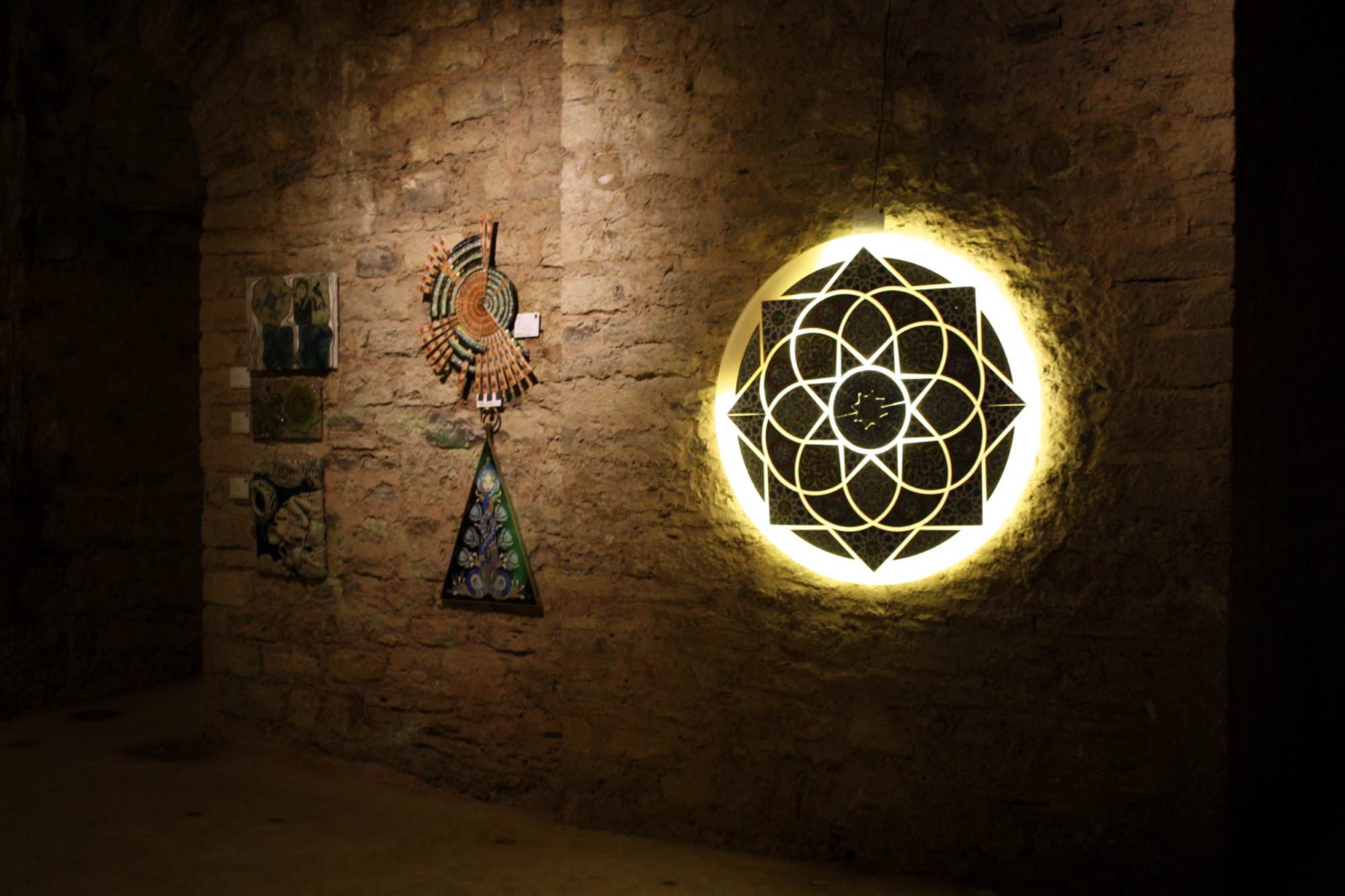Shows
Yeditepe Biennial: Istanbul’s Islamic Arts Festival


Does the Yeditepe Biennial represent the future of art in Turkey? That is what people in Istanbul were debating this year when the Islamic arts festival’s first edition, titled “Senin Bir Sanatın Var” (translated as “You Have the Art”), opened on March 31 and ran through May 15. Organized by the Classical Turkish Arts Foundation and the Fatih Municipality in Istanbul under the auspices of the Office of the Presidency, the event featured more than 600 artists working with classic Turkish or Islamic motifs in traditional media—from calligraphy to marbled paper (ebru)—as well as videos, sculptures, oil paintings and multimedia artworks. “Ehl-I Hiref,” the Ottoman name for craftspeople and artisans, served as the main theme, while there were exhibitions under five further divided subjects: “Every Aspect of a Flower,” “Like a Bird,” “About Istanbul,” “Flawless Repetition,” and “Overflowing From the Places.” Works were located at 30 sites spread across Istanbul’s historical peninsula, including inside the Aya Sofya (Haghia Sophia), the Istanbul Archeological Museum, historical madrassas and hamams, Topkapı Palace, the Grand Bazaar, public squares and the Sirkeci train station.

What particularly alarmed members of Istanbul’s contemporary art community was a statement at the Biennial’s launch by the then-mayor of the Fatih Municipality, Mustafa Demir: “If there is a Turkish pavilion in the Venice Biennale, I am sure that after 2018 or 2020 Yeditepe will be the host.” His proclamation immediately raised concerns that the government was planning to replace the Turkey Pavilion’s organizer, the private nonprofit Istanbul Foundation for Culture and Arts (İKSV), with a newly created group whose ideological leanings would mirror the government’s. It was not clear if Demir’s statement was bluster or a forecast of the ruling AK Party’s (AKP) intentions. In 2014, İKSV had signed a 20-year lease with the Venice Biennale for a space in the Sale d’Armi, within the Arsenale complex. The foundation currently organizes the Turkey Pavilion for both the art and architecture editions of the Venice Biennale, with the support of the Ministry of Foreign Affairs and the Minister of Culture and Tourism. Performance and multimedia artist İnci Eviner has already been announced as Turkey’s representative at the 2019 Venice Biennale.
The Yeditepe Biennial also appeared to be an implicit challenge to the Istanbul Biennial, which has been organized by İKSV since 1987. Demir said at the beginning of the festival: “When compared to other biennials, Yeditepe Biennial is the first where the unique samples of traditional arts are exhibited . . . It is very important for these artworks, which have been locked up in indoor areas and had difficulty to find their deserved value, to meet with people and appear before them.” In an interview with the government-run TRT World media outlet, curator Serhat Kula commented, “Yeditepe Biennial believes that both sides have a lot to learn from each other. Contemporary art can learn from the aesthetic value of the traditional arts, whereas traditional arts can make use of the dynamic tone of contemporary arts. There was a cleavage for many years between both. We think it’s time to break the taboo and ask the necessary questions. These two fields are not rivals, they are neighbors.” Perhaps this too was a reference to the Istanbul Biennial, whose 2017 edition, curated by Berlin-based artist duo Elmgreen & Dragset, was titled “a good neighbor.”
The Yeditepe Biennial represents AKP’s latest campaign to remake the country in its own image by promoting pious Islamic values and Turkish heritage. At the biennial’s opening ceremony on March 31, held inside the Aya Sofya, Turkey’s president Recep Tayyıp Erdoğan said, “When it comes to arts, culture and history, Turkey has long been taken captive by stereotyping, and a narrow point of view based on a certain idea and time period. Islamic arts like calligraphy, marbling, illustration and other ornamental arts have been neglected.” At the Aya Sofya, for instance, there were many framed examples of calligraphy, as well as sculptures such as Hatice Ünal’s enlarged, turquoise-color Islamic prayer beads. While reflective of AKP’s perspective that Turkey’s Islamic heritage was marginalized in the modern republic’s history during the 20th century, countless modern and contemporary Turkish artists have engaged with aspects of the country’s aesthetic legacy from Ottoman times, albeit often with a complex or critical perspective. As the Biennial’s focus on crafts and artisanship reveals, however, the AKP understands the arts as practices that serve to ornament and augment religious belief and pious lifestyles.
Beginning in 2017 and throughout early 2018, until Erdoğan called for early elections, the president had been promoting reforms and government support for education and culture. In May 2017, Erdoğan announced that the AKP would embark on a new cultural campaign in the lead up to the centennial of the Turkish Republic in 2023. He said at the time: “We should rediscover and rebuild our national and cultural values, which reflect the native Turkish culture and arts, against cultural alienation and imperialism through a universal perspective.” On February 22, the president personally awarded the Cultural and Tourism Ministry’s Special Prizes, to a musician, filmmaker, an Ottoman art historian, Sufi writer and the Baksi Museum, located in the northeastern Black Sea region and known for its mix of traditional and contemporary arts. Now that Erdoğan will be in power for another five years, after securing more than 50 percent of the vote on June 24, this campaign will likely continue.

The Yeditepe Biennial proved to be divisive among people in Istanbul’s contemporary art community. Many refused to go see it at all, either because it was an event sponsored by the AKP or because of the traditional culture it promoted—positions that also mirror AKP’s line that traditional Islamic arts have long been disparaged by the more secular portions of Turkish society. But many others were curious, and felt it was a unique chance to at least see what people are doing in the traditional arts circles, as well as what kind of art the government is promoting.


To generalize from only a partial viewing of the Yeditepe Biennial, there were some artisans with outstanding technique, although the event’s organization as a whole was not commensurate with many of their abilities. Sometimes this was to the grave detriment of the artists themselves. For instance, Murat Gür took handsome photographs of the hands of many artisans. These large, black-and-white prints were shown outdoors on poorly constructed walls in Sultanahmet Square, where some prints had been damaged by the sun, fallen down, or flecked with bird droppings; their surfaces were covered in hand-prints. That was a problem for many of the other public works, which were executed in cheap materials and fell apart or were quickly damaged, such as the odd styrofoam architectural structure near the Blue Mosque designed by the curatorial team to house birds. There was also a surfeit of kitsch throughout the Biennial, like the many painted benches—decorated with flowers, touristic icons of Istanbul and cliché nationalist symbols (Turkish crescents, tulips, the Galata Tower)—scattered throughout the exhibition venues. Another problem were the thematic shows that focused exclusively on specific motifs, like flowers, birds, Islamic geometry or simplistic depictions of the city. No matter how talented the individual artisans, or how important the flower is in classical Islamic arts, displays like Marmara University Republican Museum’s room of floral artworks were deadening in the repetition of the same motif by different artists, and were ultimately superficial in their engagement with the subject matter.

That said, there were a handful of interesting projects that did marry traditional arts with contemporary approaches to display or media. At the Turkish and Islamic Arts Museum, for instance, miniature painter Taner Alakuş created a darkened room where you looked through lenses at depictions of mythological beings or old renderings of the city. In the cellar of the Nuruosmaniye Mosque, a stop-motion film from 1970 made by Tonguç Yaşar and art historian Sezer Tansuğ, titled Amentü Gemisi Nasıl Yürüdü (“How the Amentü Boat Was Steered”), was formally inventive for its use of calligraphic marks to create old Ottoman boats and animals in a parable of divine love. Mustafa Cemil Efe’s installation of calligraphy written across seven vertical panels staggered in space had a dramatic floating presence.
Whether the Yeditepe Biennial will happen again—with more than 600 participating artists, it already gave exposure to many from this large community of artisans and craftspeople—or become something else is unclear, particularly since the Fatih mayor Mustafa Demir resigned from his post in Istanbul and was elected to the national parliament in Ankara in June. But with president Erdoğan putting the seal of his office on the festival, there was no doubt about its purpose as part of AKP’s agenda to transform Turkey into a more subservient society under one-man rule.


The Biennial’s cryptic slogan “You Have the Art” and its mirrored signage was presumably meant to suggest that Turks should look at themselves and their history, and not at the outside world, for their cultural inspiration. But there is also a blatant contradiction in suggesting that individual expression can only be derived from traditional artisanal practices associated with Islamic piety or the lifestyles of Ottoman-era, Muslim-Turkish society. If “you have the art,” then you don’t necessarily need to live by the rules of inherited forms. That was evident in even the Biennial’s displays of traditional calligraphy, where, for instance, the more remarkable works were the ones that broke from tradition, rather than obeying them to the point of becoming entirely generic. That is a fundamental condition of culture itself—the assertion of a subjectivity, wrestling against the conditions of society to realize itself—that AKP, in its promotion of traditional artisanship, does not acknowledge or understand. But that will not stop the government from promoting its vision of a pious Turkish society and subduing all potential avenues for alternative expressions and lifestyles. Now, the arts in Turkey are squarely in its focus.
HG Masters is editor-at-large of ArtAsiaPacific.







